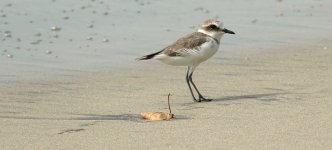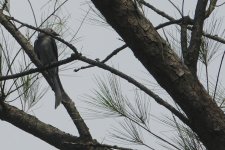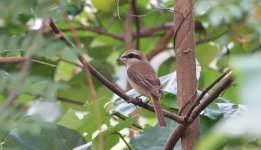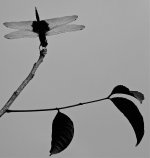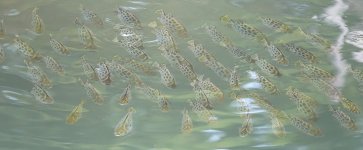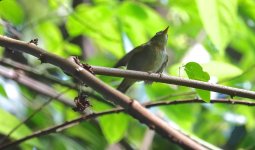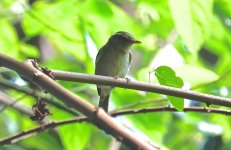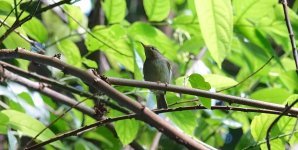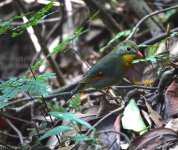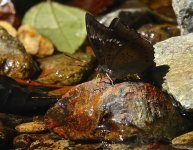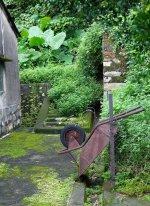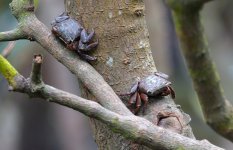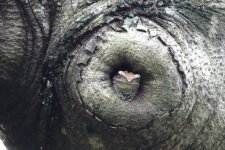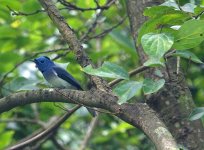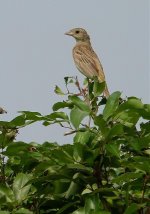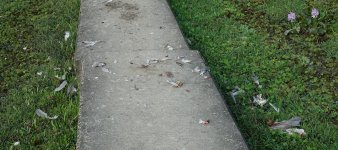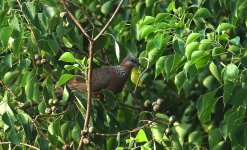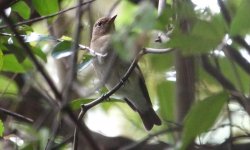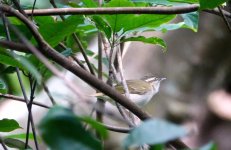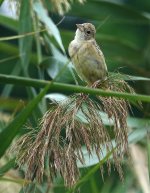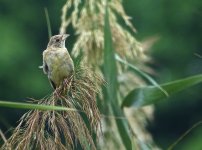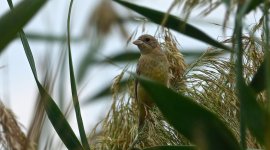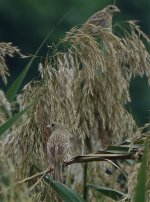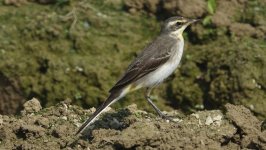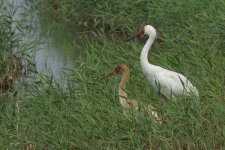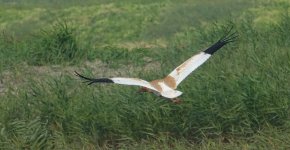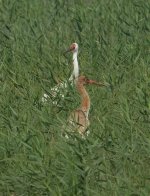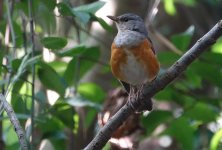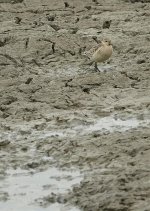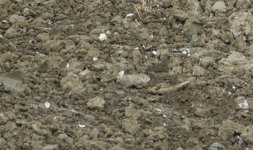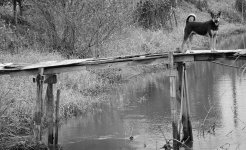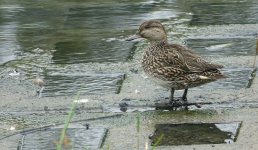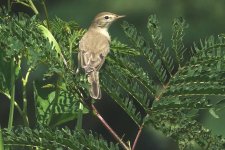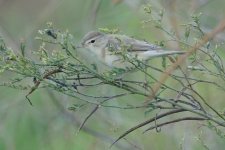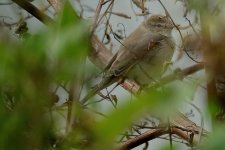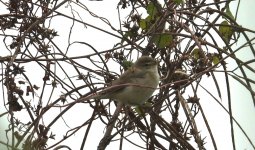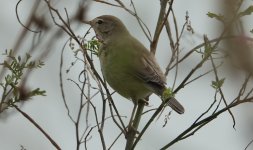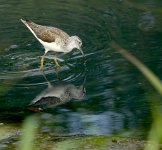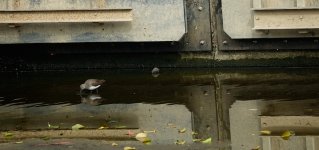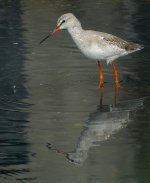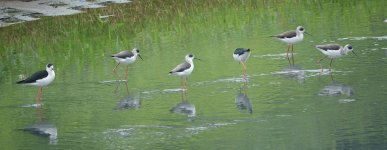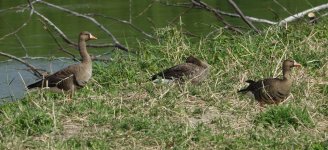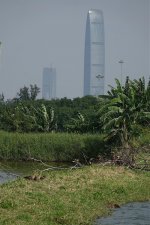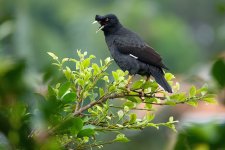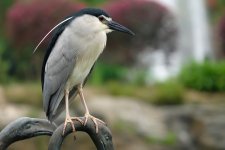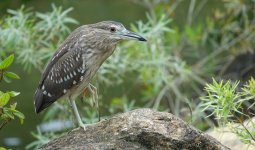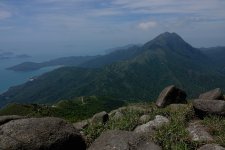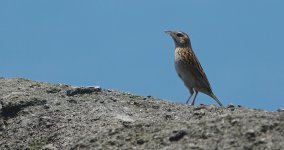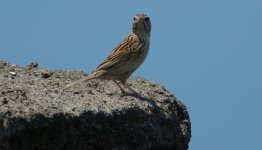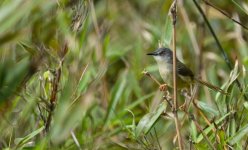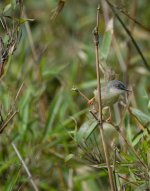Many thanks Owen and Gretchen
This weekend was hot and unseasonably humid after the passing of two typhoons last week and with the winds southwesterly and heading up migrants I had high hopes for Tai O on Saturday. It started well with a soaring Crested Goshawk as the bus descended out of the clouds on Lantau Peak, a juvenile White-bellied Sea Eagle flew alongside the bus as it went past Shui Hau, and a Besra was displaying vocally above the ridge on the left hand side of the road as I entered the Tai o valley.
An initial trawl through the mangrove -lined former salt pans produced three or four each of Dusky Warbler and Black-browed Reed Warbler and the usual scattering of Great Egrets with an occasional Grey Heron and Little Egret. There were also five Richard's Pipits on the football pitch.
The star of the Shaolin Valley was a fine male Black-naped Monarch. Always one of my favourite flycatchers, this one was typically hyperactive and noisy and the usual wonderful combination of rich power-blue head, breast and back against a velvet-black collar and top-knot.
The valley was otherwise rather quiet, with the supporting cast coming from a couple of Asian Brown Flycatchers, a rather soft-spoken Dusky Warbler that had me dreaming about Yellow-streaked Flycatchers and a Pale-legged/Sakhalin Leaf Warbler that I barely saw but caught calling with the camera's video function. It will be interesting to see if I can do anything with it to pull out a specific identity, especially after all the interest with two birds turning up in Europe in the last week.
On Sunday I had another foray away from the patch to explore Long Valley. A Black-headed Bunting has been knocking about for the last fortnight or so along with a good supporting cast, and this terrific site always has the potential to turn up something special.
Always birdy, the valley welcomed me with a hepatic Plaintive Cuckoo and a shallow pond holding a dozen Black-winged Stilts, a pair of Avocets, half-a-dozen Wood Sandpipers and a jumble of Fan-tailed Snipe. Red-throated Pipits, a Little Ringed Plover, two leucopsis and a dozen ocularis White Wagtails, a few Chinese Pond Herons, a Black Drongo, two Stejneger's Stonechat and the usual Spotted Doves, Black-necked Starlings and Crested Mynas provided the usual backdrop.
The bunting action happens around the rice fields, which are specially planted for the purpose by the Hong Kong Bird Watching Society. I kicked off today with a couple of Yellow-breasted Buntings including a fine male that was still sporting the brown breast band of breeding plumage, and a Chestnut-eared Bunting. I then latched on to the fast-disappearing tail end of a larger sandy-brown bird as it disappeared to the easternmost corner of the valley showing just a hint of a large dark eye, and perched tantalisingly on top of a lychee tree. I trundled over to see it and predictably enough it disappeared when my head was turned. My meagre compensation was the first of five flyover Common Mynas and a bunch of Great Egrets, a few Black-winged Stilts, a Common Kingfisher and a Green Sandpiper in the drainage channel.
I headed back to discover, predictably enough, that some other birders had just seen the bunting, but my searched delivered nothing better than flocks of White-rumped and Scaly-breasted Munias and Tree Sparrows feeding on the rice. While I was waiting, a scan to the horizon all round pulled out a Kestrel over Crest Hill and over towards Deep Bay a soaring aquila Eagle that was really too far away to do anything with except speculate.
Bumping into John Holmes turned out to be the secret ingredient, and as we gave the rice fields a final pass, John said: "there it is", and there it was . . . It flew up and perched on one of the trees behind the paddy. For some reason I like Black-headed Bunting - particularly the juveniles that turn up in autumn in Hong Kong. They are ungainly and scruffy, with no feature that could be described as beautiful. At least for those that I have seen, the identification has never been especially tricky, but somehow I enjoy them every time I see one - and this one was no exception.
Afterwards, as we wandered out, we picked up a few Black-browed Reed Warblers in a big patch of high grass as we tried unsuccessfully to dig out a different bunting that was determined not to show itself.
Cheers
Mike





